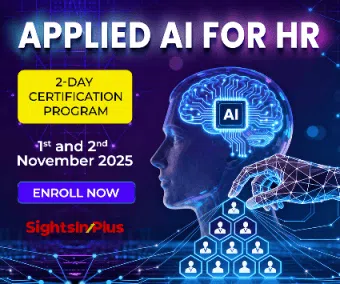“There are no boundaries or borders in the digital age.” — Karim Rashid.
The actuality is that the digital world is boundaryless, and it has seeped into all peripheries of our life. Can it be altered or dominated? Probably not! The necessity to be digitally abled is the most significant need of the time. Talking about the most recent scenario, organizations sustained or survived the pandemic primarily because they turned digitization into an advantage.
Apprehending how much money is used on talent hiring and development; it becomes decisive for organizations to define strategies around building and developing digital talent within, instead of the default option of looking out. Unfortunately, developing hidden skills is not that easy as it is largely ignored, unexplored or NEW. An employee’s skills can be far broader than what their jobs demand them to do – and most utmost of those other capabilities have limited to no direct pertinence to what they’ve been selected to do.
- 76% of existing employees can be cross-trained.
- 68% of employees are ready to take up additional responsibilities
- 87% of employees wish to upskill
- And 63% of employees feel that they are underutilized.
Glancing at these numbers, we learn that maybe we are not exploring the talent within. The untapped capability, unfortunately, is what most organizations miss. With a deficit of digital skills represented as a significant and widening impediment to digital transformation, it appears that the challenge to find suitable digital talent has become a thorn in the side of many companies, both large and small.
According to a new study titled ‘Skills for Digital Transformation,’ only 27% of companies have an identified strategy for executing their digital initiatives. Only 17% say their business has staff with the skills to assist in digital transformation.
How can this gap be minimized?
Comprehending the unknown is not that easy but possible. Here are few ways to identify and develop the hidden digital skills:
- Know your people: With the help of technology, it has become doable to connect individually and personalize our approach towards any employee. It is imperative to map where the organization, employee, and market are. Understanding the current status is the first step towards establishing the success path. Use real-time data, HR analytics, AI, machine learning to understand their interests, inclinations, goals and enable them to explore, contribute and add value to the system.
- Ask: Ask questions about their interest in the company. Questions like, “how do they feel working for the current profile? What would they want to learn in the next 3/6 months? What you want to achieve? How you want to grow?”. ASKING questions is the simplest and most effective way to get clear answers to the questions and identify the right people at the right time and enable them further for collaborative growth.
- Let them wander: Let them formulate their path, let them explore. Come up with platforms where they can engage and contribute beyond the defined scope. Experimentation helps! In addition to their core job profile, give them time and opportunity to understand other skills/ projects within and outside the organization. Not all those who wander are lost.
- Trust them: Counseling, coaching, and training are proven mechanisms to guide people but if they say that I am not capable of doing a particular project or follow a specific skill and want to be part of the other project, hear them out. Trust them and give them that chance if possible. You never know; workers could go from being disengaged mediocre performers to top performers. Picasso was a salesman, first!
- Think beyond the defined bars: Don’t just get cemented with the employee’s current profile and performance. The Formal high-potential (HiPo) identification programs focus too much on past performance and technical skills. Maybe that individual is not in the right place but has great potential. Hence, it becomes more important than ever to personalize the approach and not categorize it. One should avoid being judgmental. Widen the playground!
- Create a pathway: Knowing alone will not take us anywhere; defining goals and administering directions is equally essential. Employees should know that they are valued, and their growth is as vital as the organization’s growth. It’s a WIN-WIN situation. Only when it becomes a discussed and a shared responsibility it starts yielding results. Invest well to reap well!
- Share “WHY, WHEN, HOW, and WHAT”: To drive any initiative, the first question that should be proactively answered is “WHY?” Why we are doing this, when the purpose is clear, the remaining steps (BY when we will do this, how we wish to achieve this, what is in there for me?) seamlessly get covered. So if it is about defining a “LEARNING and A GROWTH MINDSET CULTURE,” it has to be shared.
- Respond to change: CHANGE! A common impediment to an organization’s digital transformation is senior management buy-in. Essentially, this brave new digital world has triggered a substantial cultural change, and in many instances, the people making the big decisions are trapped in the past. The workplace needs to become more accessible and less linear – a place where people can collaborate, interact, and, most importantly, exchange knowledge. GET OUT OF THE WAY!
When it comes to digital skills, even the slightest improvements in company culture can make a big difference in staff growth and creative production. By tapping into those broader abilities, managers open up more possibilities for success through innovation and suffice that growing need for meaning to themselves and the entire organization.
While there will always be sufficient ways to hire and build digital talent for organizations, research says the loyalty index improves by 65% if we invest in the talent we already have within our walls.



